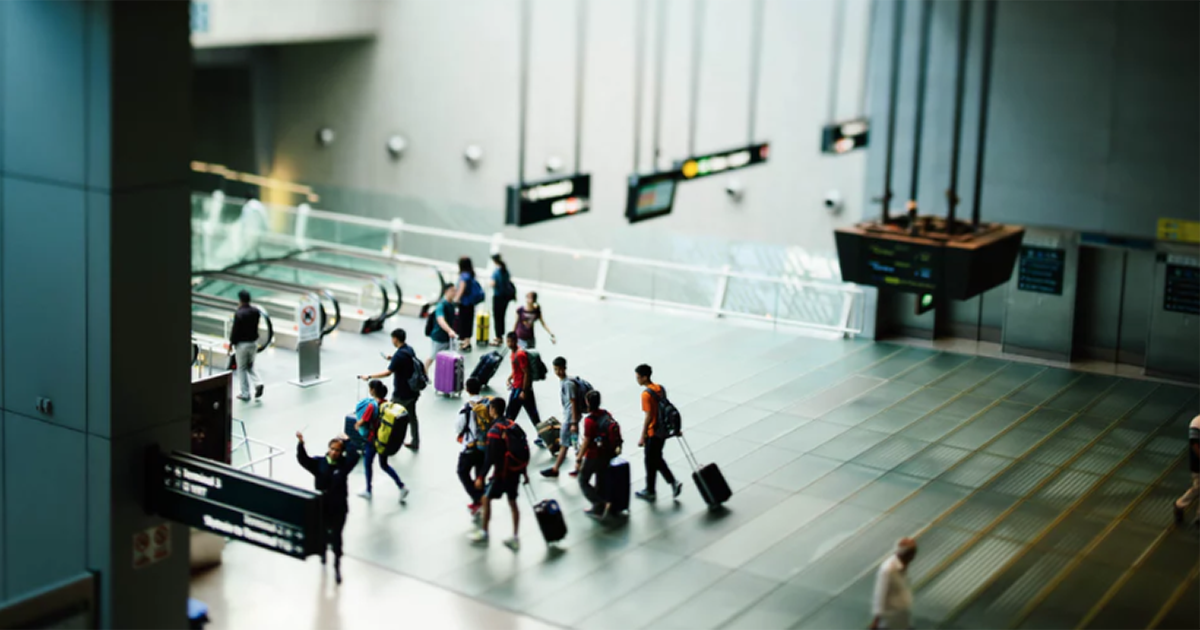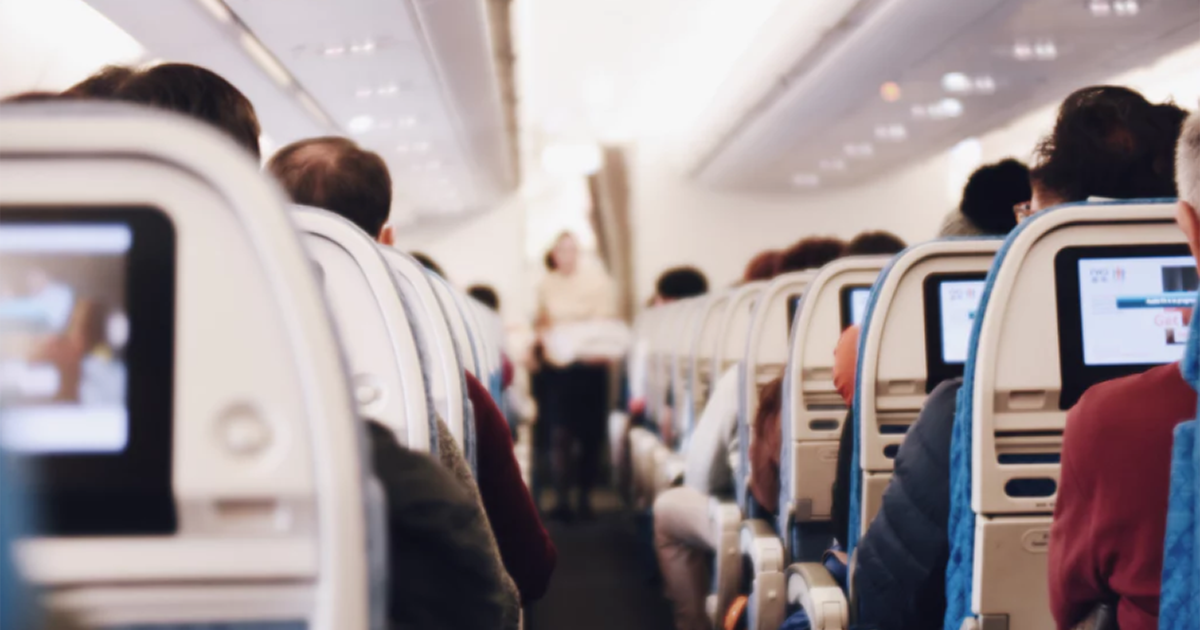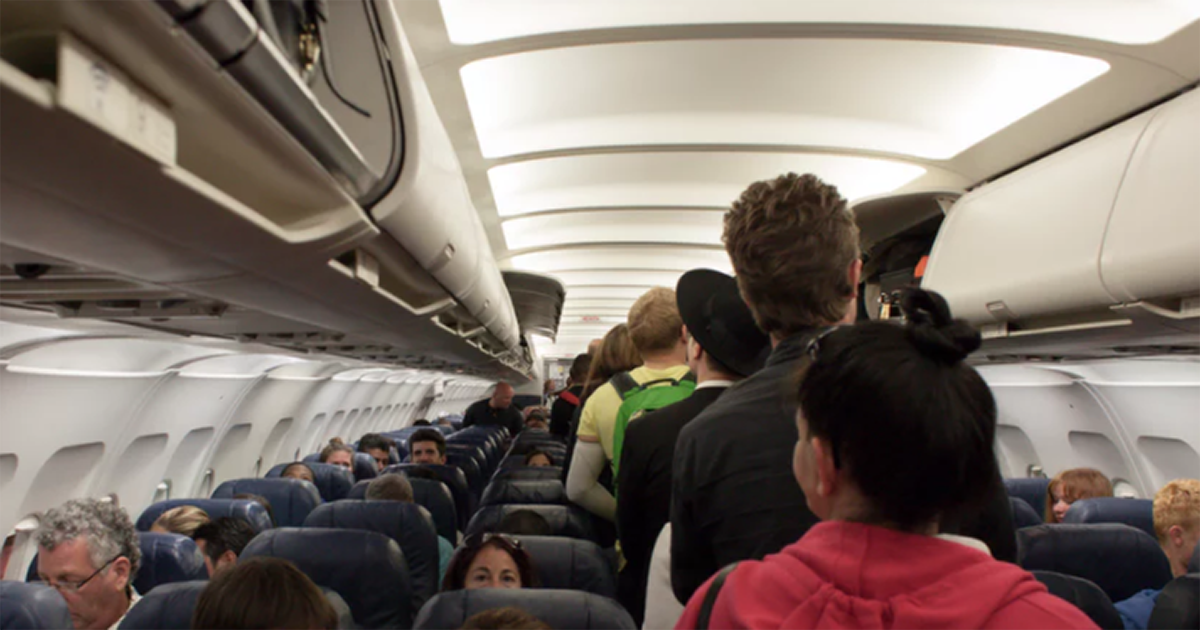|
Mind+Body+Spirit - Nov/Dec 2017
Simple tips to help keep you healthy if you'll be traveling on one of the 11,000 flights a day during the holiday season.
- story by LB Kovac
Modern passengers aren’t quite as lucky as Pheil: with airlines crunching to carry more passengers in already cramped airplanes, the average seat width has squeezed to just 17 inches. This puts flyers even closer to their neighbors, healthy or not, than they were five years ago.
If you’re planning on flying this holiday season, there’s a few things you can do to keep yourself safe from the spread of germs.
Stay Hydrated
The best advice for flyers is also the simplest: drink lots of water. Humidity in a plane’s cabin is kept under 20%, much lower than the 30% humidity most people keep in their own homes. On a long flight, you can easily dry out your mucus glands, which in-turn can make you more susceptible to picking up germs. “[Drinking lots of water] will keep your respiratory tract moist, which gives you more protection against germs,” says Dr. Abinash Virk, an infectious disease expert at the Mayo Clinic. “Hydrating also prevents your skin from getting dry and cracked, which makes you susceptible to infections.” If you’re set on enjoying a hot cup of joe on your flight, you can always ask for an extra cup of water from the flight attendant.
Keep Your Hands to Yourself
In 2008, a severe outbreak of gastrointestinal distress amongst passengers on a Los Angeles-bound plane caused the flight to make an emergency landing. Initially, the airline thought that the virus spread via the restrooms. However, viral pathogen researchers found that all the infected passengers had one thing in common: almost all of them were sitting in aisle seats. The aisle seats, though coveted, put passengers in the way of more hands. Passing flight attendants and fellow passengers use the outermost armrests to steady themselves as they walk along the plane’s aisles. This makes the outside seats a hotbed for bacteria, passed along by every person that touches the seat’s armrests. It seems like mom’s advice is as important now as ever: keep your hands to yourself, and you’re less likely to pick up germs, or spread them to other passengers.
Bring Hand Sanitizer
If you’re now afraid of armrests, there’s one more place on the plane that you should be even more cautious of: the bathroom. Airlines do clean them each night, but, when you’re on a long flight, or a short flight on a plane that is used for multiple flights each day, the bathroom will get a lot of use between thorough cleanings. In economy, as many as 50 people share one bathroom on the plane each flight. A good supply of hand sanitizer minimizes the surfaces in the bathroom your hands can come into contact with and insures you are the one out of 50 who remains bacteria-free.
And Wet Wipes
After the bathroom door, the tray table is the surface most touched by passengers on a plane. And, when you’re enjoying that coffee and water, you’re picking up germs from the Ideally, airplane crews would be wiping them down between passengers, but there’s often not enough time for attendants to give the plane a deep cleaning between flights. You must do what others cannot and clean the tray table. A quick douse with an anti-microbial wet wipe (one with a built-in moisturizer will keep your hands hydrated) will eliminate most of the germs on the tray table’s surface, allowing you to nosh on those in-flight peanuts worry-free.
The St. Petersburg-Tampa line, as the hop over Tampa Bay was called, lasted only four short months; owner Percival Fansler soon shuttered the first commercial airline due to lack of consumer interest in the winter months.
Little did Fansler know that one day, the holidays would be the airline industry’s busiest, and germiest, time of the year. Of the average approximately 11,000 flights a day that happened during the 2016 holiday season, one in every 604 flights was grounded for medical emergencies. Following these tips to keep yourself germ free can insure that you, and the other passengers, get to your destination on time. Comments are closed.
|
Categories
All
Archives
May 2024
|
Shoofly Magazine Partners
Our Shoofly Partners are local businesses and organizations who share our mission to enrich community life in Bay St. Louis, Waveland, Diamondhead and Pass Christian. These are limited in number to maximize visibility. Email us now to become a Shoofly Partner!





























 RSS Feed
RSS Feed























